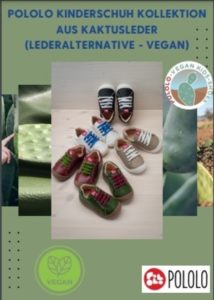Vegetable tanning
POLOLOs are guaranteed to be chromate-free and uncoated
To avoid the risk of allergic reactions and illnesses
Right from the start, POLOLO consciously and consistently only uses purely vegetable tanned leather.
Risk of allergy and even cancer: avoid chromate in leather at all costs!
Experts estimate that despite an EU regulation from 2014, around 20 percent of leather shoes sold in Germany still contain significant amounts of chromate (chromium VI), even though it is banned. However, since chromium VI residues are odorless, detection is only possible with complex laboratory tests.
According to the findings of doctors, 500.000 people in Germany are already suffering from one Chromate allergy affected – and the trend is rising. The sensitization caused by contact with chromate, for example in leather shoes, remains virulent throughout life. To be on the safe side, it is advisable to avoid using chromium salts in leather tanning and to consistently use the traditional method of vegetable tanning.
Vegetable tanning with renewable raw materials offers many advantages
The consistent use of purely vegetable-tanned leather offers many advantages when evaluating the entire process chain and avoids problems and dangers. Chrome tanned leather is always gray at the end of the tanning process, so dyeing such leather is always necessary.
However, this is not necessary for vegetable-tanned leather, as the color of the tannery can be left as is, i.e. it can be specifically selected: rhubarb, for example, turns yellow and the use of tare results in white. The coloring can therefore take place directly during tanning with the vegetable tanning agent, which is harmless to health.




